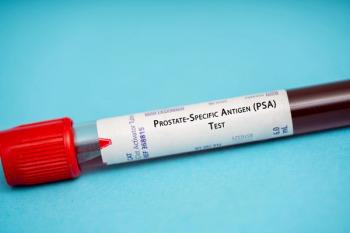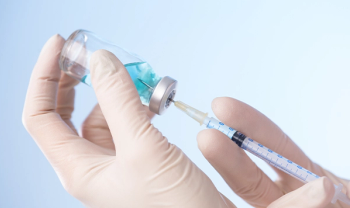
Five Reasons for Optimism in Blood Cancer Treatments
Two experts highlight noteworthy updates in the transplant and cellular therapy space. Read more.
There’s an “incredibly exciting” amount of research and development in the transplant and cellular therapy space that could result in gamechanging treatments for patients facing blood cancers such as leukemia and lymphoma.
That’s according to Amy Ronneberg, chief financial officer and president of Be The Match BioTherapies, which partners with various organizations to pursue life-saving cellular therapies in every stage of development-from discovery to commercialization
In particular, Ronneberg points to recent FDA approvals in the cellular therapy space and the high amount of venture funding going into emerging therapeutic companies-about $7 billion last year-as promising trends.
Ronneberg and Steven Devine, MD, stem cell transplant physician and medical director at Be The Match BioTherapies, recently spoke with Managed Healthcare Executive to discuss developments in the transplant and cellular therapy space. Here are six takeaways from our conversation:
1. Bone marrow transplant has improved and evolved dramatically since its inception decades ago.
Outcomes among patients with blood and marrow transplants have improved, thanks to better donor-recipient matching (such as through human leukocyte antigen typing), improved patient support systems, and less toxic treatment regimens, says Devine, who is also senior vice president and senior medical director of research operation at the Center for International Blood and Marrow Transplant Research.
One big improvement has occurred in the realm of allogeneic transplants (in which donor cells are used). “We’ve managed to be able to reduce the rates of severe graft-versus-host disease-that’s the major complication of transplants,” says Devine. “It is still a problem but often we’re able to recognize it and try and prevent it more effectively.”
The biggest problem that remains for patients transplanted for hematological malignancies such as leukemia, lymphoma, or multiple myeloma, is relapse, says Devine. “The real focus, I think in the next decade, is to try to mitigate the risk of relapsing after transplant and that’s where a lot of efforts are being spent.”
2. More elderly patients are benefiting from treatment developments.
Bone marrow transplant is becoming a safer choice for elderly patients with lymphoma, myeloma, acute leukemia, and myeloid dysplastic syndrome, says Devine.
“The biggest area of growth now is in older patients, so patients over the age of 60. Ten to 15 years ago we never sought them for donor transplants (what we call allogeneic transplants). Now the median age is close to 60, and many patients in their 60s and 70s are eligible for transplantation.”
3. Cancer is not the only disease benefited by transplantation.
Devine says in autologous transplants, in which the patient’s own blood stem cells are used, the most common indications are multiple myeloma and non-Hodgkin’s lymphoma. In terms of allogeneic transplants, the most common indication is acute myeloid leukemia and myelodysplastic syndrome, which is a blood disorder that affects blood formation in older patients.
“There are increasing indications not only for patients with cancer, but also for nonmalignant conditions like sickle cell disease and even potentially down the road, autoimmune diseases like multiple sclerosis,” says Devine.
4. CAR-T cell therapy may ‘bridge gaps’ for patients
There are many clinical trials in the cellular therapies space outside of bone marrow transplants, such as CAR-T cell therapy and the use of NK cells, says Ronneberg, noting that a few CAR-T therapies have already received FDA approval.
“This may be a really good option for patients, it may be a bridge to transplant for some, and it may be the only thing they need, so that’s really what’s broadly most important right now,” she says.
Ronneberg hopes CAR-T therapy will provide patients with more treatment options. “What I really look forward to is those patients that are maybe too sick for a bone marrow transplant, maybe a CAR-T is a solution for them now, and then down the road maybe they get a bone marrow transplant.”
She adds that for patients who may only need CAR-T, there may be improved prognosis, because they will not encounter the common graft vs. host complication that can crop up when patients receive allogeneic transplants.
5. CAR-T is costly, but could become more accessible over time
Right now, most development companies are focused on collecting CAR-T cells from the patients themselves, but some companies are studying CAR-T cells derived from donors, or even so-called “off the shelf” allogeneic third-party CAR-T cell, says Devine.
“We really have no data to know if that would work, but it’s possible if it worked that that could potentially lower some of the cost associated with CAR-T cell therapy,” he says.
Ronneberg adds that when assessing cost, it’s important to consider that CAR-T therapy could be a one-time cost, rather than multiple types of different treatments and medications some patients face and that also don’t work for some patients.
“I think our future will bring to us efficiencies,” she says. “Again, this is such a brand-new therapy, over time the industry will find ways, I believe, to manufacture one too many or maybe right at the bedside, where treatments will get more efficient … I think in another year we’re going to have a lot more information and understanding of how coverage will work.”
Newsletter
Get the latest industry news, event updates, and more from Managed healthcare Executive.






















































